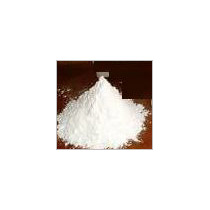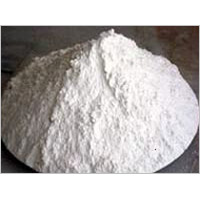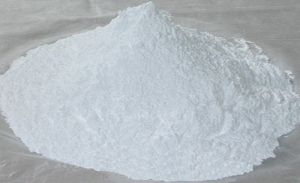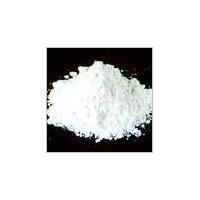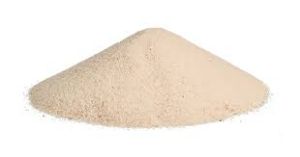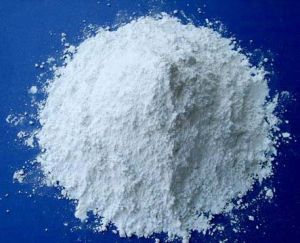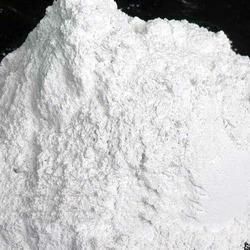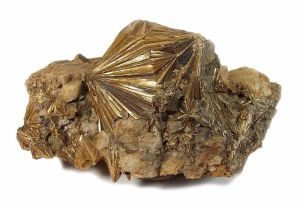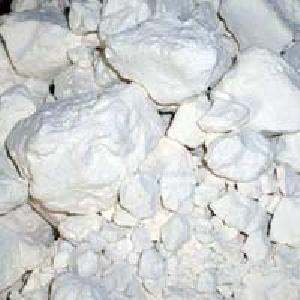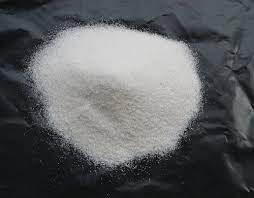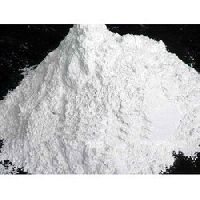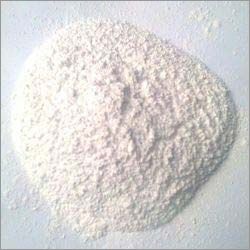NEB Extension, Alwar, Rajasthan
- GST NO. : 08ABOPS7174A1ZC
| Business Type | Manufacturer, Exporter, Supplier, Retailer |
| Type | Organic |
| Brightness | > 96% |
| Calcium Carbonate | 98% |
| Click to view more | |
Product Details
Calcite Powder or Limestone is a common sedimentary rock composed primarily of the calcium carbonate mineral, calcite (CaCO3). Calcite Powder constitutes approximately 10 percent of the sedimentary rocks exposed on the earth's surface. Calcite Powder is formed either by direct crystallization from water (usually seawater), or by the accumulation of sea animal shells and shell fragments. In the direct crystallization case calcium ions in the seawater combine with atmospheric or dissolved carbon dioxide to form calcium carbonate, which being insoluble, precipitates out. Over time, layers of the calcium carbonate form, and with sufficient time and pressure from overlying materials, are transformed to solid rock. The chemical composition of seawater and its minerals contaminants will be recorded in the limestone impurities. Limestone frequently also contains the minerals dolomite or calcium magnesium carbonate (CaMg(CO3)2, and a second crystalline form of calcium carbonate, aragonite.
In the seas that covered much of the earth in earlier geological times lived many clams and other shelled forms of animal life. When the animals died, their shells, which are composed of calcium carbonate, fell to the bottom. Thick layers, which can be a mile or 2 kilometers deep, gradually were changed into rock. If the shells were only compressed, with little crystallization occurring, soft chalk results. The White Cliffs of Dover in England are made of this type of chalk. With more time and pressure, a coarsely crystallized rock can form, which is limestone. In limestone, most traces of the animal shells have disappeared.
Pure calcite, dolomite, and aragonite, which are in the limestone, are clear or white. However, with impurities, they can take on a variety of colors, commonly white, tan or gray. Limestone can also have gone through metamorphosis, with high pressure, heat and time creating marble. This process tends to intensify the color of the stone as well as changing the nature of some of the impurities. Metamorphosis creates the beautiful marbles seen in architectural applications.
Uses of Calcite Powder
Calcite Powder and marble are important building materials in most parts of the world. They are used as cut dimension stone (blocks and slabs) for building. In the form of coarsely crushed stone or aggregate limestone is used for general building purposes, roadbeds and as a component in concrete. When heated, the calcium carbonate in limestone decomposes to lime, or calcium oxide, which also has many industrial applications, including the manufacture of precipitated calcium carbonate (PCC).
Either limestone or marble may be used as the basis for crushed or ground calcium carbonate. Ground calcium carbonate, commonly referred to as GCC, is very widely used as an industrial mineral. Three primary attributes: particle size, color and chemical purity define the quality of the GCC, and define the suitability of use for any given application.
Ground limestone is available in a broad range of sizes. When specifying the size of a ground calcium carbonate, either the top size (the size of the largest particles) or the median particle size (essentially the average) can be used. Commercially, top size is generally specified for coarser industrial minerals, which may be as big as beach sand, which is 10 mesh or 2 millimeters or approximately 0.1 inch in size, or as fine as flour; which is 200 mesh, or 75 microns. Finely ground calcium carbonates can range down in particle size to just a few microns, 1 to 3, with the top size controlled for high performance applications to as fine as 5 to 10 microns.
Limestone color can range from brilliant white to light gray and chemical purity can range from only 80-90% calcium carbonate to well over 99.9% purity. Calcium carbonate is not a particularly hard mineral, with pure calcite falling at about 3 on the Mohs scale of 1 (talc) to 10 (diamond). Silica impurities in the limestone can raise the hardness of some ground calcium carbonates to a Mohs value of 4. Calcium carbonate is subject to attack by acidic environments, which has led to the damage of limestone buildings and monuments by acid rain. For industrial uses, the effect of an acid can be somewhat reduced by treating the ground limestone powder with fatty acids to put a non-polar, organic material on the surface. Few industrial minerals can match GCC for its combination of properties and cost.
Industrial Applications
Calcite Powder In Plastic Industry
Ground calcium carbonate or Calcite Powder is cost-effective functional filler for plastics. Besides reducing formulation costs, calcium carbonate provides opacity and surface gloss. Impact strength and flexural modulus are improved when the particle size is carefully controlled to a fine median particle size and a minimum top size. Further improvement in impact strength and flexural modulus is possible with the appropriate surface treatment on the fine ground calcium carbonate. The surface treatment also enhances the dispersion of the filler in the resin system.
Calcite Powder can be incorporated into a number of resin systems including, but not limited to rigid and flexible polyvinyl chloride, polyethylene, polypropylene, unsaturated polyesters, polyester, polyurethane, nylon, and polyacrylate. Within these systems, the Calcite Powder has the following functionalities :
- Impact modifier, filler and opacifier in PE compounds
- Impact modifier, filler and opacifier in PP compounds
- Reinforcing filler for HDPE
- Filler in flexible PVC wire and cable coverings
- Promoter of gas and vapor permeability in breathable LLDPE film
- Antiblock in low clarity LLDPE film
- Impact modifier and filler in rigid PVC potable water pipe
- Impact modifier and filler in rigid PVC general purpose pipe
- Shrinkage control, mechanical property enhancement in SMC/BMC, unsaturated polyester compounds
- Resin extender for Polyolefins, PVC and engineering resins
- Reinforcing filler for nylon
Surface treated ground calcium carbonate products disperse easier in most polymeric systems when compared to untreated products. The typical surface treatment is stearic acid.
Calcite Powder In Paints and Coating
Calcite Powder or Ground calcium carbonate (GCC)�also called ground limestone, whiting, or chalk�is the most widely used extender mineral in coatings applications. It is available worldwide and close to most paint manufacturing locations. It is very bright and comes in a wide range of particle size distributions. Finally, it is the most economical of all common filler minerals.
The widest use for GCC is as filler in architectural or decorative coatings. While it is primarily used in interior paints, it is included in some exterior formulations as well. It tends to be the filler of choice for paints sold at a low price point and/or where longevity is not the primary attribute. That said, GCC is also used in top-of-the-line flat or matte finishes.
High-brightness calcium carbonates are selected for ceiling paints and other applications requiring high dry hiding and are formulated above the critical pigment volume concentration (CPVC). By combining two or more grades of different particle sizes, thus altering the particle size distribution of the filler package; manufacturers can adjust the flatness of finish of interior architectural coatings and improve the scrubability of the final paint film. GCC can be used in exterior building paints as long as the pigment volume concentration (PVC) is not too high. The PVC must be sufficiently low with enough binder present so that the film does not become too porous over time.
GCCs are also economical extenders included in road-marking and traffic-paint formulations to lower costs while still meeting the optical specifications for the finished film. Although GCCs have many desirable traits, it is not a universal extender mineral. It will react with acids, so its use it limited to areas where it will not be exposed to acid rain or other acidic fumes or liquids. In contrast to high-aspect ratio platy talcs, calcium carbonates, with their round or nodular particle shape and low aspect ratio, make relatively little contribution to improved film formation and integrity and will increase film porosity. For these reasons, the use of GCCs is limited in industrial, marine, and metal-protective maintenance coatings.
Looking for "Calcite Powder" ?
Explore More Products

